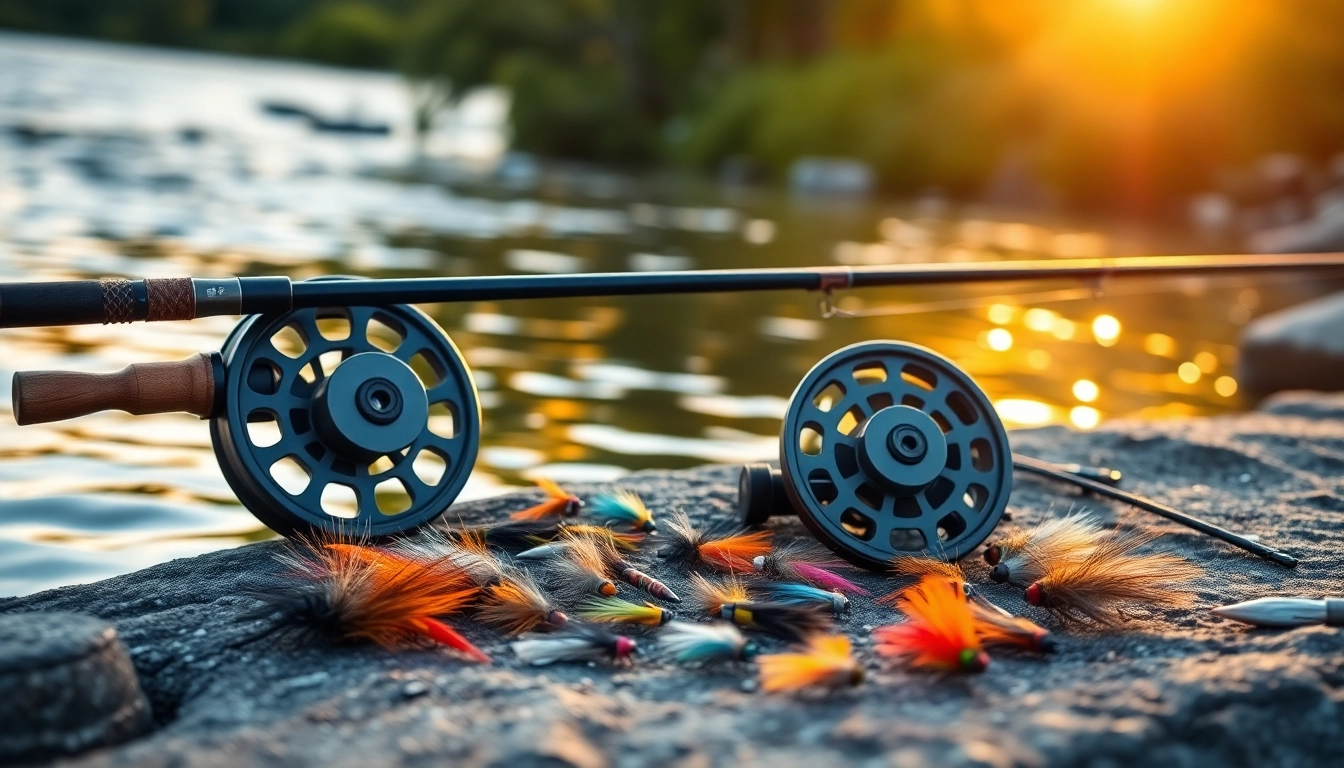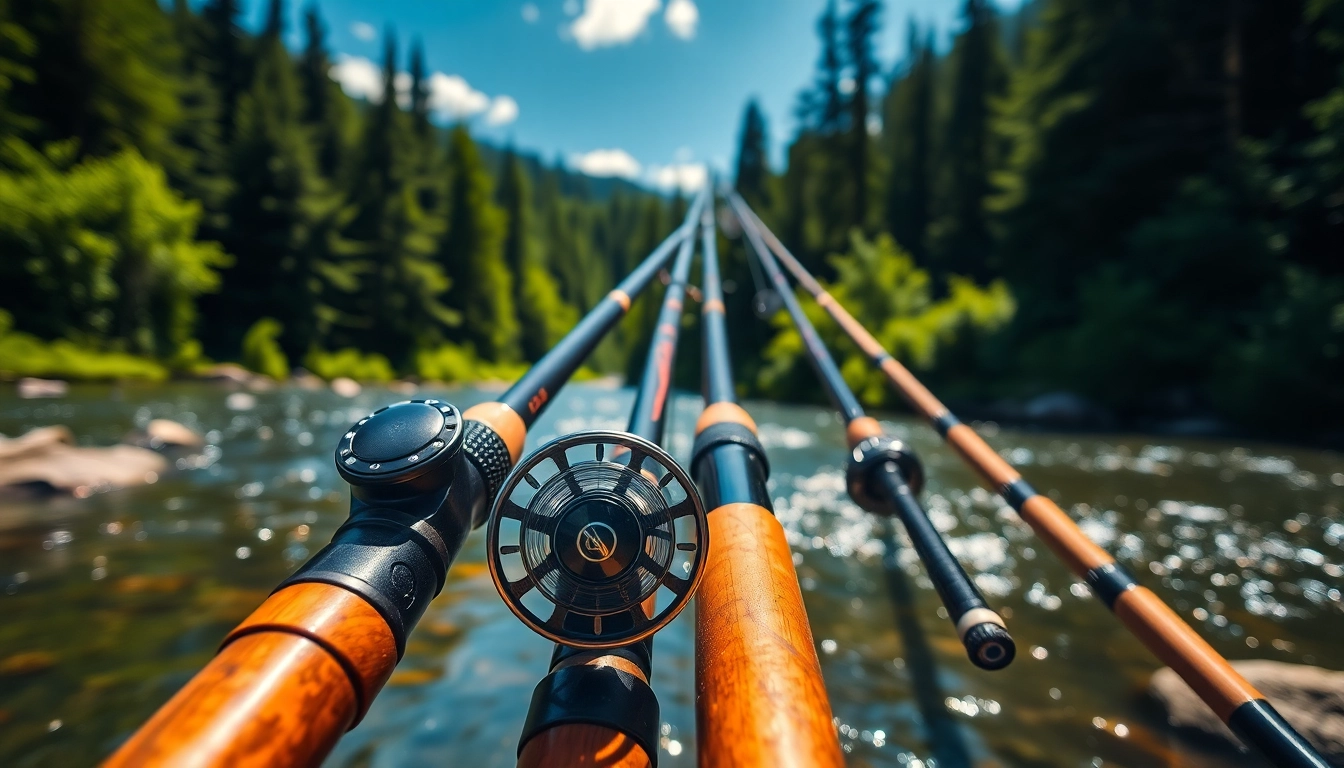Understanding the Essentials of a Fly Fishing Kit
Embarking on a fly fishing adventure begins with the right assortment of gear. A well-curated Fly fishing kit makes it possible for enthusiasts—be they beginners or seasoned anglers—to enjoy the thrill of catching fish in various aquatic environments. In this article, we will dissect the components that constitute a complete fly fishing kit, along with practical tips on utilizing it effectively, ensuring maintenance, and upgrading when necessary.
What Makes Up a Complete Fly Fishing Kit?
A comprehensive fly fishing kit is not just about having a rod and a reel. It comprises several essential components designed to enhance your fishing experience. Here’s what you need:
- Rod: Typically made from materials like graphite or fiberglass, the rod comes in various lengths and actions, affecting its performance and suitability for different fishing conditions.
- Reel: The reel holds the line and assists in retrieving the fish. An adequate reel should be lightweight and match the rod’s specifications.
- Line: This includes backing, fly line, and leader. The backing provides extra line, the fly line is used for casting, and the leader connects the fly to the line.
- Flies: These imitate natural bait and are essential for attracting fish. Various types exist for different fishing scenarios.
- Accessories: Items like tippet material, a fly box, lanyard, and tools for line management greatly enhance your fly fishing experience.
Choosing the Right Rod and Reel
Choosing the correct rod and reel is crucial as it affects how effectively you can cast your line and catch fish. When selecting a rod, consider:
- Length: Ranges from 7 to 10 feet, with shorter rods being more maneuverable and longer rods allowing for longer casts.
- Action: The flexibility of the rod. Fast action rods provide quick response for quick strikes, while slow action rods are better for delicate presentations.
For reels, look for a model that balances well with your rod’s weight and offers a smooth drag system. Also, consider the types of fish you plan to target, as larger fish require more robust equipment.
The Importance of Fly Selection
Flies are the crux of fly fishing. The selection of flies must correspond with local insect hatches and fish preferences. Beginners may find it beneficial to start with a few versatile patterns like hook flies, streamers, and dry flies. Matching the hatch can significantly increase success rates while fishing. Additionally, knowledge of color, size, and type are essential factors that should be considered while selecting flies.
Essential Accessories for Your Fly Fishing Kit
Alongside the essential components of your kit, various accessories ensure a smoother fishing operation. These tools can make a considerable difference in your success rate and enjoyment while fly fishing.
Waders and Protective Gear
Waders protect you from cold water and muck while allowing you to wade into deeper waters. Materials vary from breathable fabric to heavier rubber; selecting the right type depends on the season and water conditions. Additionally, wear a proper hat, sunscreen, and polarized sunglasses. Polarized sunglasses reduce glare off the water, enhancing visibility when fish are lurking below the surface.
Tools for Successful Casting
Various tools can enhance casting accuracy and effectiveness:
- Quality Leaders and Tippets: A strong leader and tippet help to present your fly naturally.
- Forceps: These are invaluable for handling fish or removing hooks safely.
- Scissors: Sharp scissors help make quick line adjustments.
Investing in these tools will enhance your fishing experience, making it more enjoyable and efficient.
How to Maintain Your Kit
Proper maintenance of your fly fishing kit ensures longevity and smooth operation. After every trip, rinse your gear with fresh water to remove salt and dirt. Regularly check your knots and leaders for wear, replacing them as necessary. Keep your reel clean and lubricated, ensuring it operates smoothly. Lastly, inspect your rod for any splintering or damage, replacing it if necessary.
Best Practices for Using Your Fly Fishing Kit
Utilizing your fly fishing kit effectively requires sound knowledge of best practices that take advantage of your gear.
Understanding Local Water Conditions
Every body of water presents unique fishing conditions. Factors like flow rate, water temperature, and clarity can profoundly affect where fish are located and what they will bite. Conducting pre-fishing research and regularly examining local conditions will improve your chances of success. Identifying the type of fish commonly found in the local waters also helps tailor your approach and equipment adjustments accordingly.
Techniques for Effective Casting
Mastering effective casting techniques can significantly improve your fishing results. Focus on the following:
- Backcast: Properly positioning your backcast helps build tension for your forward cast.
- Forward Cast: A smooth application of power to the rod while maintaining control ensures accuracy.
- Roll Casts and Snap Casts: Learning these advanced techniques can improve presentation in tight spaces.
Practice these casts regularly to build muscle memory and improve your casting under various conditions.
Safety Tips While Fly Fishing
Safety is paramount while enjoying the great outdoors. Always wear a life jacket when wading into deeper waters. Be aware of your surroundings, including weather changes and potential hazards inherent to your fishing location. Keeping a first aid kit and informing someone about your fishing plans can mitigate risks.
Common Challenges with Your Fly Fishing Kit
Understanding potential challenges when fly fishing can help you prevent and resolve issues as they arise.
Identifying Gear Issues in the Field
Common gear issues include line tangles, equipment failure, and fly changes. Regularly inspect your gear and learn to recognize potential issues. Having extra tippet material and tools can mitigate on-the-spot issues.
How to Address Common Casting Mistakes
Many beginners struggle with casting accuracy and distance. Analyzing common mistakes, such as casting too hard or not allowing the line to straighten, is essential. Practicing in open spaces and seeking feedback from experienced anglers can also help improve technique over time.
Dealing with Weather-Related Setbacks
Weather conditions can dramatically alter fishing opportunities. If forecasts predict extreme temperatures or thunderstorms, it may be wise to postpone your trip. Always check local weather updates before embarking on your fishing adventure. Additionally, employing layers of clothing can help manage temperature fluctuations.
Upgrading Your Fly Fishing Kit
As your skills develop, you might find it necessary to upgrade parts of your fly fishing kit. Knowing when to upgrade is as important as knowing what to upgrade.
When to Consider New Equipment
Know it’s time to upgrade when you consistently find your gear lacking during your fishing trips. If you’re catching larger fish than before or you’re fishing in situations that require different setups, consider investing in higher performance rods or reels. Additionally, wear and tear on your current items can indicate when new gear is necessary.
Additional Gear to Enhance Your Experience
Beyond the basics, certain enhancements can take your fly fishing experience to the next level. Consider accessories like portable fish finders, compact tackle boxes, and advanced casting tools that provide more control over your fishing methods and equipment management.
Finding the Right Resources for Advanced Techniques
Continuous learning can help improve your skills. Utilize online tutorials, books, and local workshops to learn advanced skills and techniques that can elevate your fishing game. Engaging with a community of anglers and participating in forums can also provide valuable insights and expert advice.




